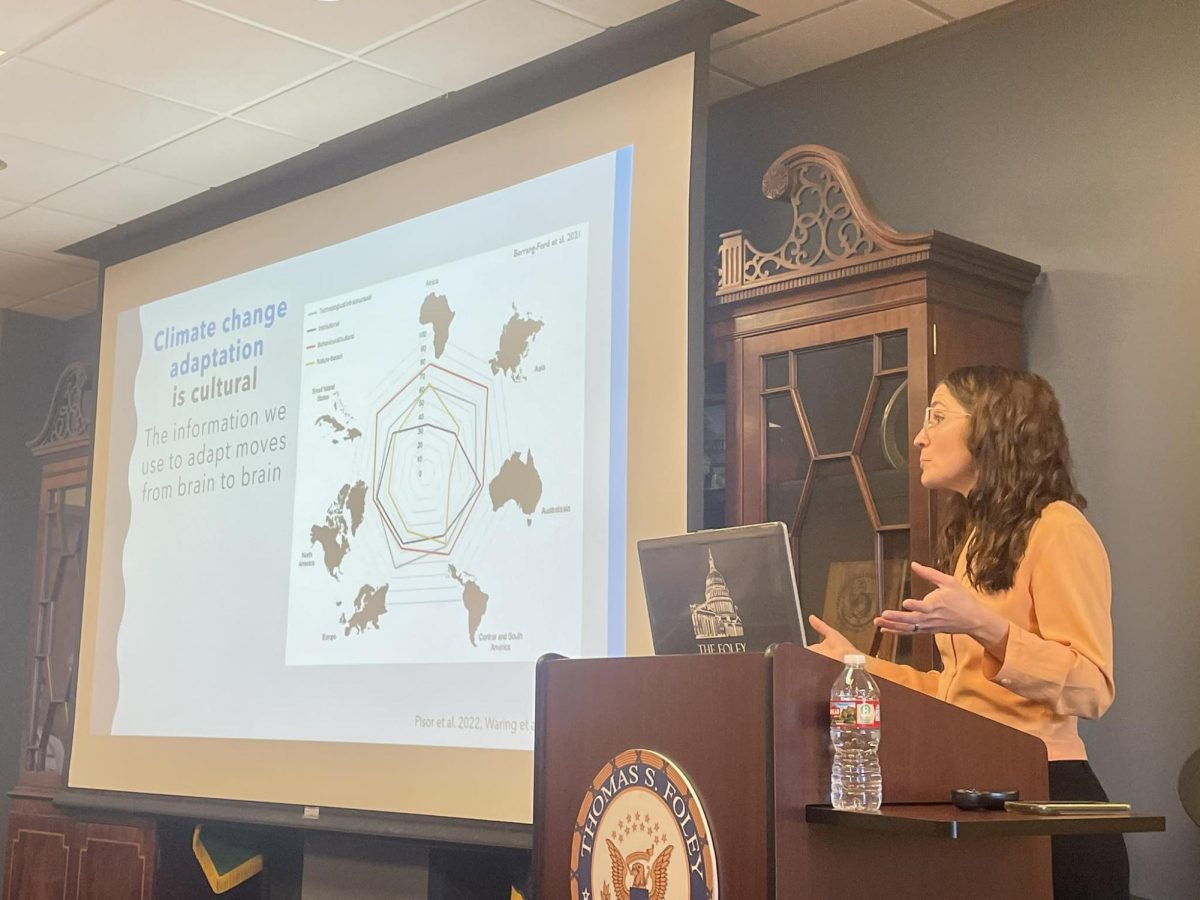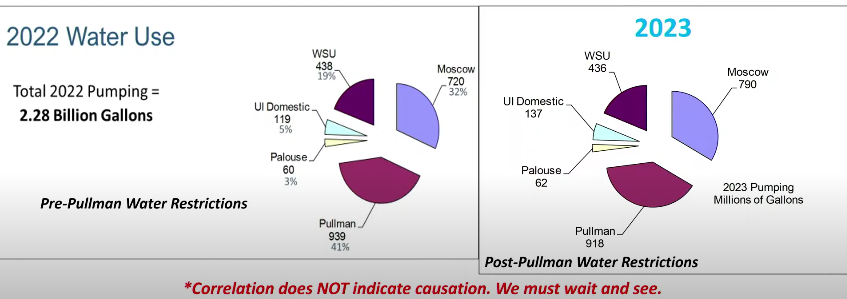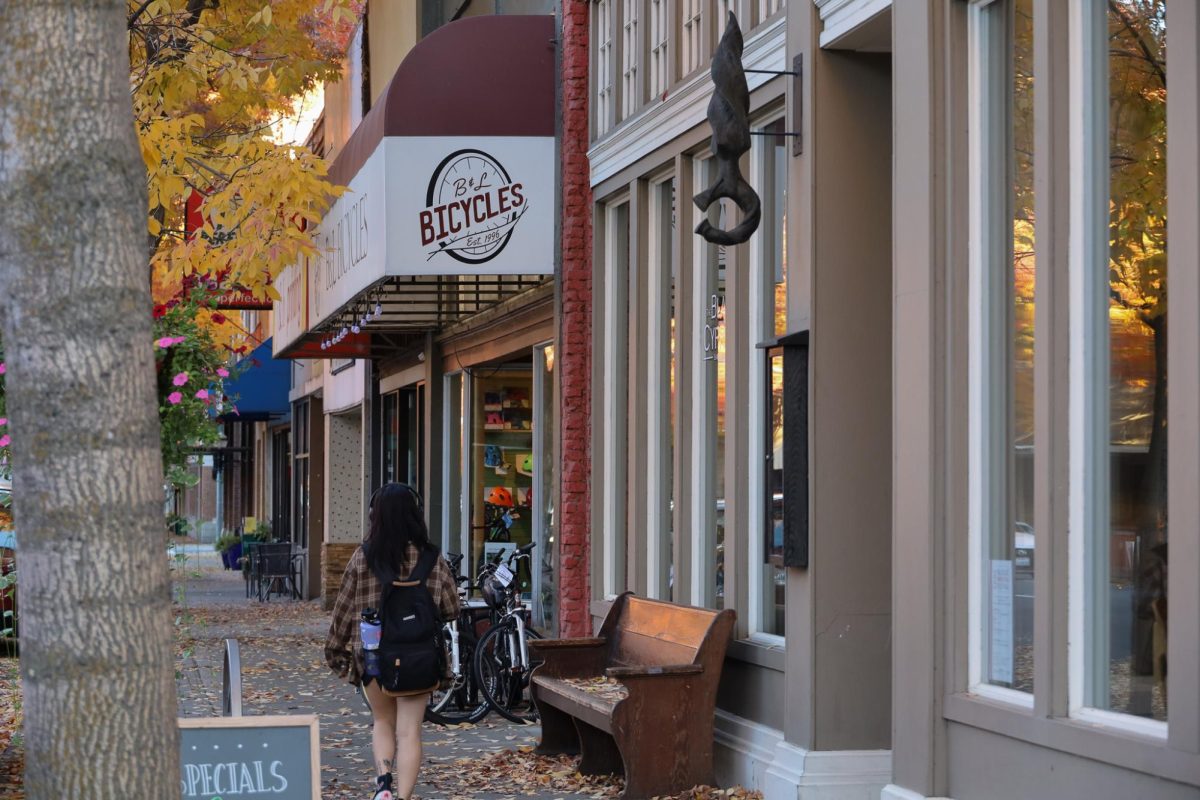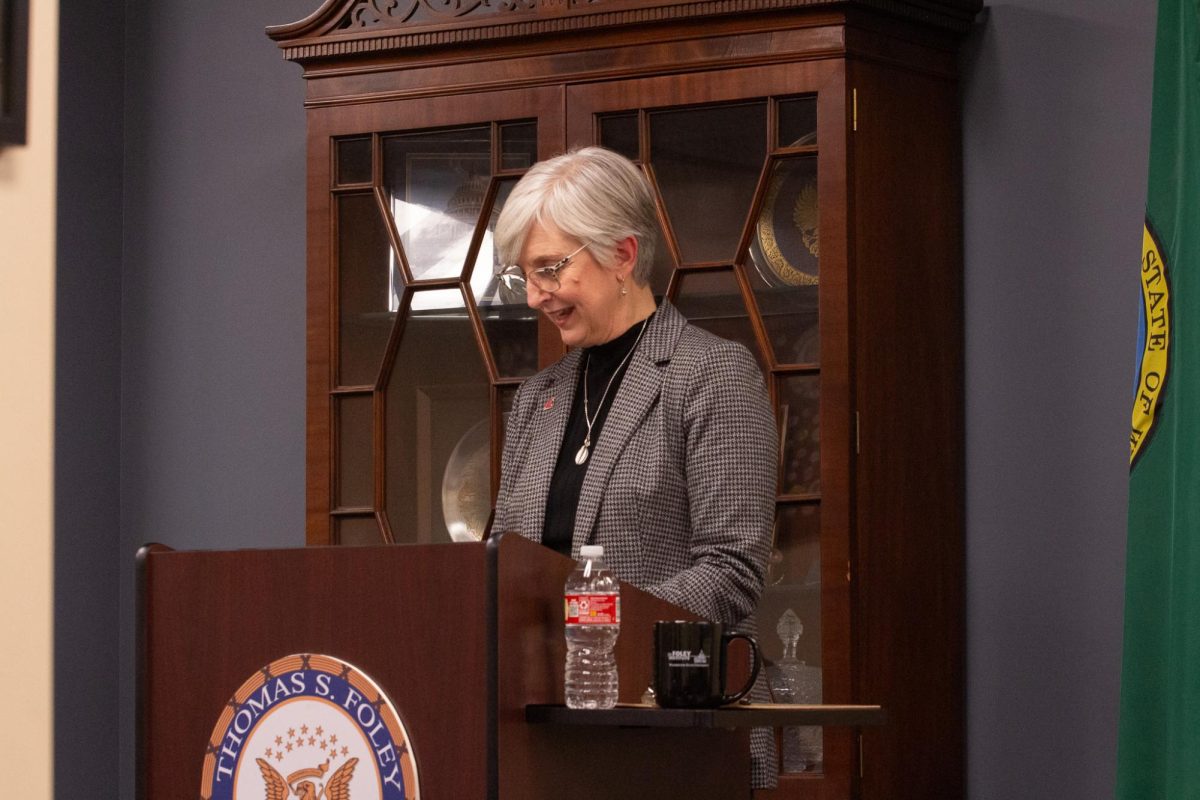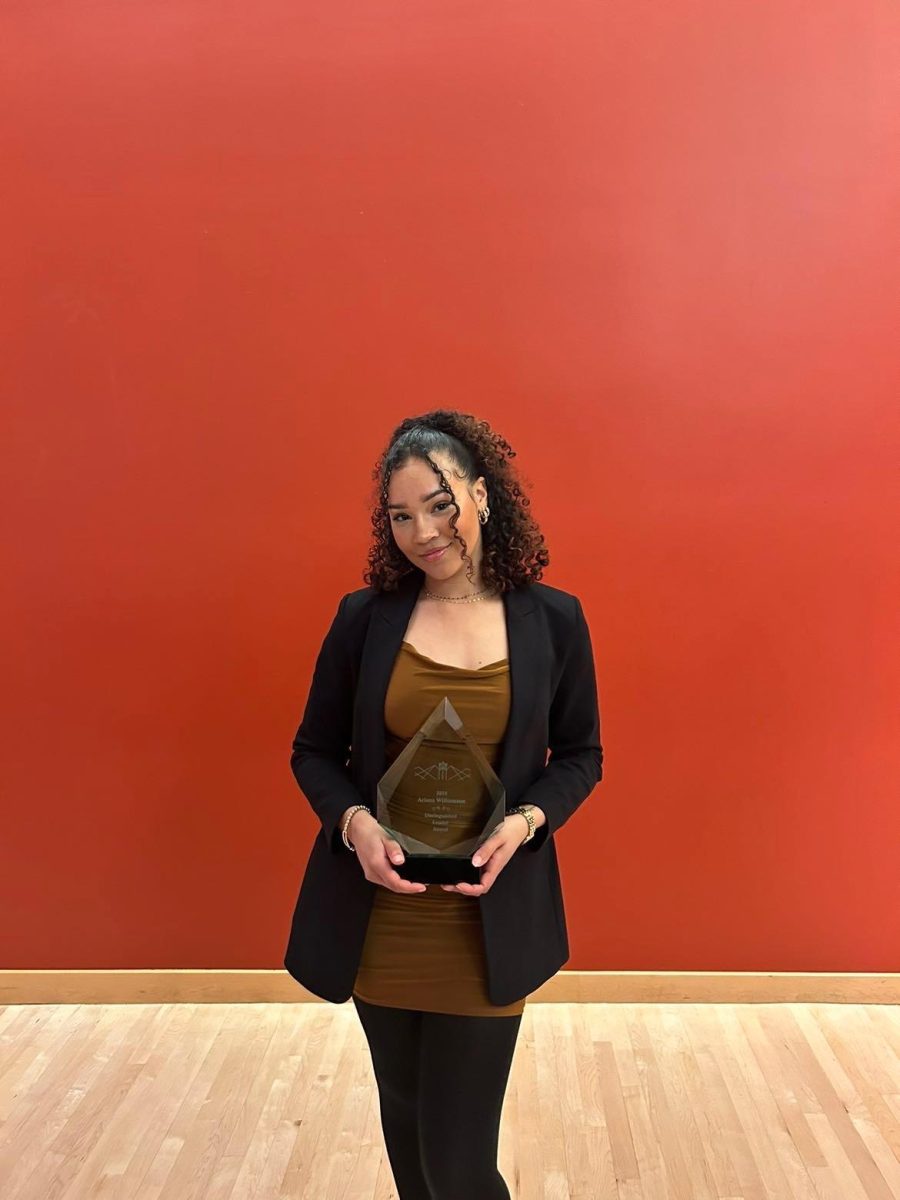Anne Pisor, WSU Associate Professor of Anthropology and Human Sociality Lab Director discussed adaptation in terms of the effects of climate change Oct. 19 at the Foley Institute.
Understanding adaptation is necessary to coping with and responding to climate change, Pisor said.
“Adaptation is [the] change in response to or anticipation of something, in this case, climate change, to reduce risk,” she said.
There are three main ways that humans have historically managed risk, namely through savings, mobility and risk pooling, Pisor said.
In terms of understanding adaptation as a way of reducing risk, it is important to think about what works for people, Pisor said. If something has been used by a community for a long time, it can be assumed that it does reduce risk and will continue to be used, she said.
Furthermore, adaptation is effective when negative events and impacts can be managed, she said. It is also important to include stakeholders and actual communities facing these issues and understand their experiences when solving these issues. This is also important to consider as trade-offs may have to be made since what is beneficial to the environment may not always be beneficial to communities, she said.
“When folks are talking about nature-based adaptations in the policy literature, they’re talking about things like mulching or changing the way that folks cultivate. Those ideas are moving from brain to brain between farmers,” she said. “What we’re talking about, for example, having these more institutional changes, social safety nets, the ideas that different programs are using around the globe for how to buffer risk move from nonprofit to nonprofit. So there’s a lot of cultural transmission happening, even in the climate change adaptation space.”
Climate change adaptation is also rooted in communities and founded upon grassroots efforts, Pisor said.
“We often find that some of the most effective adaptation is coming from communities,” she said. “Things that already work for them may not be what policymakers are talking about, but communities often have been using this for a very long time.”
Climate change adaptation can also be viewed through the process of evolution, Pisor said.
“There’s innovation in the climate change space, people come up with new ideas. Those ideas change across time and they get transmitted,” she said. “They can also get retained if they work well. People keep doing stuff if it works well for them. All these ideas are similar to ideas from biology.”
Continuing to look overseas may also be effective as it can display adaptivity at work, Pisor said. Remittance data (money sent to other countries) may be used to do this, she said.
“When should we see remittances come more into play when it comes to climate variability? When are people using this strategy? What you might predict is that when an event is really bad, you get more remittances,” she said. “This suggests that fine-grained longitudinal data can help us study what is adaptive, the effectiveness of responses in terms of risk reduction and what they are responses to.”
Pisor also discussed the importance of socializing and social networks in adapting to climate change.
“The more people you know, the more information is flowing and the more you can actually get in information you can then innovate on and put back out into the world,” she said. “Having folks who are actually talking about climate change adaptation enables you to remix it.”
Innovation also relies on social networks as those who have support systems are more free to innovate and are not tied down by failure, she said.
However, in denser local social networks, climate adaptation innovation may be difficult and innovation and the spread of ideas may be more prevalent in relationships between outlying subpopulations, Pisor said. This is because a denser community may be hit harder if they are all affected by the same issue, but smaller communities can act as climate impact buffers.
“As one of my colleagues once said, nobody’s written the book on adaptation,” she said. “We have to share the ideas that we are coming up with, and we need to study adaptation as it evolves. What’s working under what climate conditions? What’s working for communities on the front lines?”
It is also important to remember that when supporting communities and learning from them, their individuality must also be respected, Pisor said.
“We need to learn with communities, not just from them as objects of study, and we need to avoid putting our ideas on communities and swamping them,” she said. “If we bring ideas in and we push really hard, some of that existing, indigenous traditional local knowledge can be lost.”





